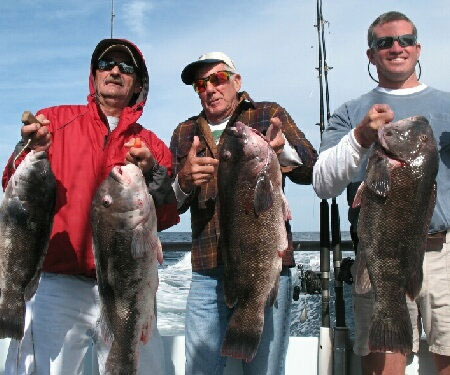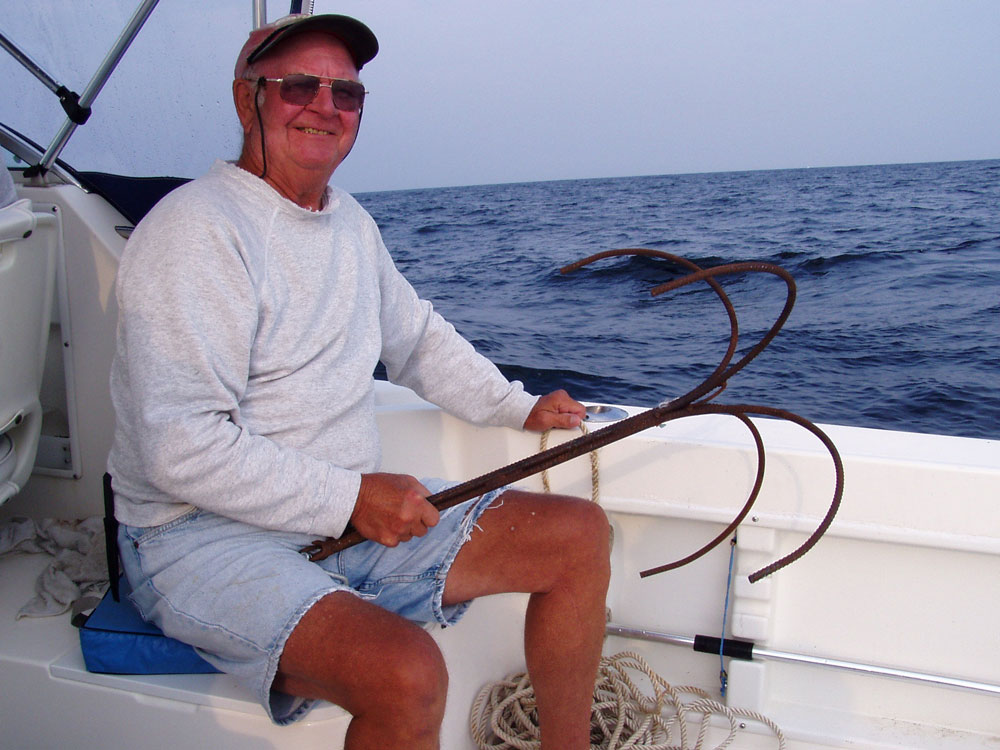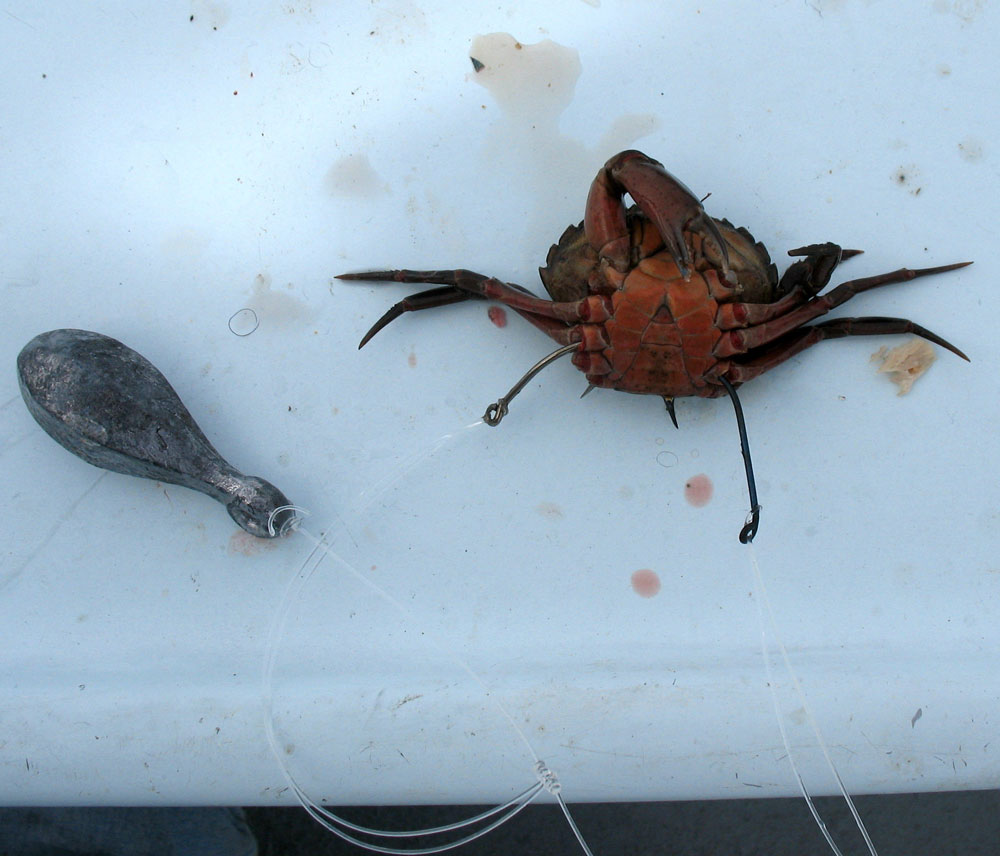Cool weather means tautog fishing gets hot up and down the Mid-Atlantic coast, but before we dive into the how-to and where-to details, let's spend an afternoon catching tautog with Captain Monty Hawkins, on the Morning Star, and see how it's done first hand.
With inshore waters cooling down, some of the tautog that hung around structure deep in the ocean during the summer move closer to land. Here, they’ll stick near jetties, rip-rap, and inlet structure, providing shoreline and small boat anglers an opportunity to catch legal-size tog, which are seldom found inshore during the warmer months of the year. Top spots for landlocked anglers in our area include the Ice Breakers and jetties at the mouth of the Delaware Bay, jetties at Indian River and Ocean City inlet, the bulkhead in southern OC (try around fourth street), and Stinky Beach.

Of course, the majority of these fish, especially the trophy-sized ones, are still hiding inside wrecks and structure, anywhere from just outside the inlet to offshore in 70 to 100 feet of water. If Mother Nature is kind, die-hard tog anglers will catch fish throughout winter and right into spring. Actually, trophy tog are normally hooked by anglers during this period and the world record comes from our neck of the woods—a 28.8 pounder that was caught in January 2015, out of Ocean City, MD.
Tautog Fishing Hotspots
As a certified divemaster I've spend many hours on the bottom of the ocean spear-fishing for tog, and if I've learned nothing else about larger specimens (over five pounds) it’s that they’re not swimming around the outside of the wrecks. They are in the dark holes of the structure hiding, waiting to ambush the next meal that swims by. Anglers need to fish right in the structure or have baited hooks sitting next to hull breaches in the wreck. This explains why one person on a boat may catch several tautog, while anglers standing just a couple feet away go bite-less, staring in disbelief and scratching their heads.
Yes, this does mean lots of rigs are going to be lost. It’s the price that must be paid to catch decent size tog. So have several extra rigs ready at hand, to make sure you can keep baited hooks in water. If you’re getting hung up in the wreck, you’re probably getting close to catching a fish. And if you’re not getting any bites don’t waste a lot of time sitting in one spot, but try moving around.
When fishing from a boat over a wreck, use a wreck anchor or set two anchors in a “V” configuration, which allows you to move the boat and best position it over the tog's habitat by taking in or letting out one or both anchor lines. It cannot be stressed enough that proper position of the boat over structure determines success or failure, when it comes to tautog fishing.

Tog Fishing Rigs and Baits
Most toggers have their favorite rig: a single hook, a double hook, hooks above the sinker, hooks below sinker, etc. However, keeping hook leaders to about six inches helps avoid snagging the wreck as often. Hooks in the 2/0 size range are about right, and although the tog's mouth might be considered small for the size of fish, keeper size fish have no issues with this size.
Bait is probably a bigger concern then rigging. Big tog like big bait. A sand flea can catch a tog, and is an excellent choice for anglers fishing from the inlet rocks or a bay-side bulkhead. To get one of those big females to come out of hiding in a wreck, however, a big appetizing bait is more likely to do the trick. Clams are often used, but crab is probably the number-one better choice. Rock crabs, fiddler crabs, white leggers, and green crabs are all good baits. A whole green crab with double hook rig (often called a “snafu” rig) is pretty much standard. Crack the crab's shell with your sinker before sending the rig to bottom, to allow some scent to escape and entice a bite.
Sensing the bite is important, and you need to set the hook quickly. Hook-sets should also have plenty of force, to penetrate the hard mouth area. Since the introduction of braided line, my hookup percentages have increased significantly over monofilament. When using large bait like whole green crab or clam, a scant bit more time may be required before setting hook. A second tap is generally in order. However, if a third tug is felt, just wind up and re-bait—chances are the hook is empty. Tautog are the best fish in the ocean, when it comes to cleaning off hooks in a hurry.

The first couple seconds after a hookup usually determines whether the angler has any chance to put the fish in the kill-box. Tog are notorious for getting back into the wreck, and breaking off lines. A rod with some backbone allows pressure to be applied right from the start, and helps to drag big tog out of a wreck. At a minimum, 30 or 40 pound test line with the drag set to the heavy side is required to deny the tog's attempt to get back into hiding. When a fish is hooked and the line becomes fouled in the structure, giving it slack occasionally results in the tog pulling the line free all on its own. But more often than not, the fish stays in the structure and a new rig will need to be tied on.
Fishing for tog is not for every angler, and thanks to the way they bite and the way they fight they can be one of the most frustrating fish to pursuit. Plus, braving the chilly weather is not for everyone. But those of us who find it difficult to store rods away during the cold months find it comforting to know that tautog are just offshore, waiting on our bait.
- John Unkart is author of Offshore Pursuit and Saltwater Tales.